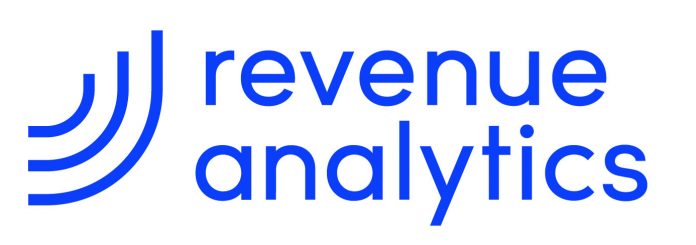Last Updated on May 23, 2024 by Ali Hamza
A consumer or client pays before services rendered in almost every sector. In healthcare sector, the trend is different. The care provider render the services and gets the payments later. The Medical revenue cycle management completes in a month or so.
The healthcare reimbursement process is complex. There is a danger of delay at every step. Bill overwhelm patients that they don’t understand and are unable to pay as a result of this method. The truth is that when billing delays occur it jeopardizes your revenue. According to Journal of Ahima, denial rate increased to 20% in 2021.
Declining reimbursements are the most pressing issue facing the healthcare business today. Why? Because providers are navigating a complex reimbursement system.
Learn how to improve your clinical, financial, and operational performance. Organize a product tour; please click here.
Complications with reimbursement result in mistakes in paperwork and coding. These mistakes result, claim denial. It is easy to avoid these blunders.
Even if identifying gaps in your RCM is tough.
You primary Focus will be Care.
In the present day, the basis of healthcare businesses is “Value-based” instead of quantity. Patients and regulators work to make healthcare affordable for all. In value-based care, payment made is on the quality of treatment. Before, the healthcare payment was on a fee-for-service basis. New healthcare reforms have been introduced.
The following ACTs and programs depict the remuneration process of value based care
- The Affordable Care Act (ACA).
- The Hospital Value-Based Purchasing Program
- The Hospital Readmission Reduction Program,
- 2015 the Medicare Access and CHIP Reauthorization Act.
- The Merit-Based Incentive Payment System
These programs provide remunerations to healthcare providers for the quality of care. According to these programs healthcare providers may be penalized for poor patient outcomes.
Other reimbursement methods pay doctors a set fee approved for treating specified illnesses. There is a fix fee for conducting treatments, medical tests etc.
If a practitioner treats a patient less time, he may receive more. If the cost exceeds the specified amount, the provider will lose the extra money.
Profitability is essential for your practice’s growth and success. You should not compromise on patient care. The focus should be on the patient’s well-being and the environment. Concentrate on the health of your patients, and the money will come.
Invest in your administrative staff.
With the appointment of your patient, organization’s finance departments begin to work. The team starts collecting patient information right away. They use this information to build the framework for billing and collections. Thus your front-office staff must collect the correct data possible.
Train your Administrative team to remain specific and keen while collecting patient and coverage information. Information may include
- Insurance coverage details
- Specialized service coverage
- Your practice is with in-network or out-of-network
- Details of the authorized visits,
- Co-pays, deductibles, and more.
Denials may occur if coverage and personal information are wrong. Employees must spend time rewriting and resubmitting it. If the information isn’t updated, the situation will deteriorate. A non-rectified information leads to difficult reimbursement issues in the future.
It’s ideal to file a near-perfect claim the first time when billing cleanliness. You don’t want your employees wasting time rewriting claims. Rewriting claim result in delay of your reimbursement procedure.
Verify Your Patients’ Information
Patient verification is a crucial elements in the Hospital revenue cycle management process. Yet it’s a typical mistake to overlook eligibility for recurring patients.
According to a survey, approximately 80% of physicians confirm patient eligibility. Only around 25% of those who return for repeat visits are re-verified. Prepare for claim denial if the patient’s coverage changes. You have missed to update insurance information. Keep a copy of patient’s insurance card to ensure the insurance eligibility. Before submitting a claim, double-check the information. It should matches with the information saved in your practice management system.
Keep an eye on your key metrics.
If you overlook denial frequency how to solve the source of low reimbursement rates?
You will not be able to know why your payment is not releases. To find the cause of nonpayment you need a sophisticated medical revenue cycle management solutions and a dedicated efficient team to scrutinize your revenue analytics. You must understand revenue drivers for successful billing and a healthier balance sheet.
Set goals, track performance, and judge performance of your front-end and back-end employees. You can use business analytics for the analysis. Or outsource a medical billing company to support you in your finances.
‘Location of service.’ Is also important
In patient reimbursement rates are usually more excellent. Billing problems may occur when care provide outpatient services in an inpatient setting. A flagged service location can create a block in the reimbursement process.
To avoid this, double-check the claim’s specifications. Focus on if they support inpatient billing. Claims should be as accurate as workable to ensure prompt compensation. A clean claim can drop incidental fraud.
Negotiate Contracts
Enhance your reimbursement rates by negotiating or re-negotiating a payer contract. A preferred provider arrangement with the payer. For example, a contract can provide you with more patient access. Especially if you agree to the payer’s payment terms before providing services. Patients will often choose to see an in-network physician. Out-of-network reimbursement can be problematic. In many states insurance plans use Medicare fees as a primary source for the payments.
Minimize Human Error
If your revenue cycle staff use time consuming procedures they make mistakes. The procedure include verification, eligibility, and patient registration, filing claims, and rewriting denials. Multitasking has been show many tipple studies to reduce productivity.
According to a study published by Stanford University, multitasking is less fruitful than working on a single thing at a time. Multitasking persons have a more complex problems. These problems are like paying attention, memorizing information and switching tasks. A person working mono-chromatically has less problems than multi-tasking.
Multitasking can also reduce your accuracy and cognitive ability. Multitasking can be disastrous when dealing with complex RCM procedures. Think of hiring an outsourcing medical billing company to improve your revenue cycle. Outsource you back office operations with medical billing company. Investing in AI-enabled tools and system can help to reduce human mistakes. Try not to overburden your medical revenue cycle management team.
Avoid Silos in the workforce.
Administrators, clinicians, and back-end staff must all be on the same page. If they aren’t, revenue cycle procedures could become problematic. Underprivileged records, for example. Careless documentation by nursing staff on services might result in claims denials. A common employee with no medical billing and coding knowledge is uninformed that minor mistake in documentation may result in denials.
Even among back-office employees, a disjointed procedure can cause significant problems. An isolated working environment worsens knowledge gaps. Knowledge gap result in a lack of understanding of how team members affect your organization’s ability to submit a complete and timely claim.
Attempting to do everything on your own
The hospital revenue cycle management is complex. New laws and regulations make billing and collections even more difficult. The COVID-19 crisis worsened the problems. Many providers were already dealing with it. Businesses are looking for technical solutions.
After the pandemic, many American hospitals and health organizations installed new RCM technologies. Hire specialized back-office team to assist your tireless workforce. AI and specialized Human resources results in a more simplified revenue cycle process. A simplified RCM results higher reimbursement rate.
Apart from this if you’re interested to know about How SEO is applied in medical practices then please visit our Digital Marketing category.


























